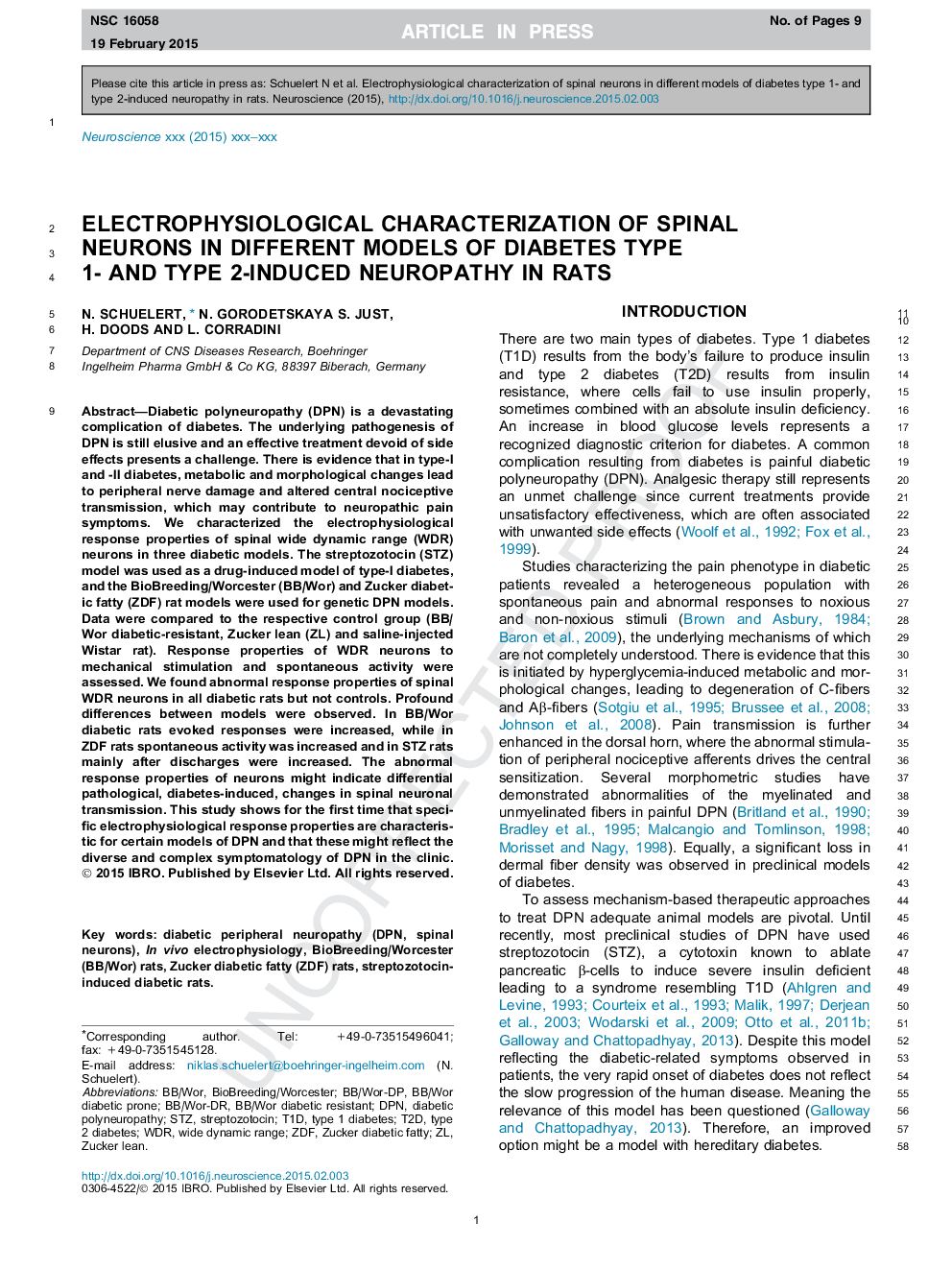| Article ID | Journal | Published Year | Pages | File Type |
|---|---|---|---|---|
| 6272790 | Neuroscience | 2015 | 9 Pages |
Abstract
Diabetic polyneuropathy (DPN) is a devastating complication of diabetes. The underlying pathogenesis of DPN is still elusive and an effective treatment devoid of side effects presents a challenge. There is evidence that in type-1 and -2 diabetes, metabolic and morphological changes lead to peripheral nerve damage and altered central nociceptive transmission, which may contribute to neuropathic pain symptoms. We characterized the electrophysiological response properties of spinal wide dynamic range (WDR) neurons in three diabetic models. The streptozotocin (STZ) model was used as a drug-induced model of type-1 diabetes, and the BioBreeding/Worcester (BB/Wor) and Zucker diabetic fatty (ZDF) rat models were used for genetic DPN models. Data were compared to the respective control group (BB/Wor diabetic-resistant, Zucker lean (ZL) and saline-injected Wistar rat). Response properties of WDR neurons to mechanical stimulation and spontaneous activity were assessed. We found abnormal response properties of spinal WDR neurons in all diabetic rats but not controls. Profound differences between models were observed. In BB/Wor diabetic rats evoked responses were increased, while in ZDF rats spontaneous activity was increased and in STZ rats mainly after discharges were increased. The abnormal response properties of neurons might indicate differential pathological, diabetes-induced, changes in spinal neuronal transmission. This study shows for the first time that specific electrophysiological response properties are characteristic for certain models of DPN and that these might reflect the diverse and complex symptomatology of DPN in the clinic.
Keywords
Related Topics
Life Sciences
Neuroscience
Neuroscience (General)
Authors
N. Schuelert, N. Gorodetskaya, S. Just, H. Doods, L. Corradini,
